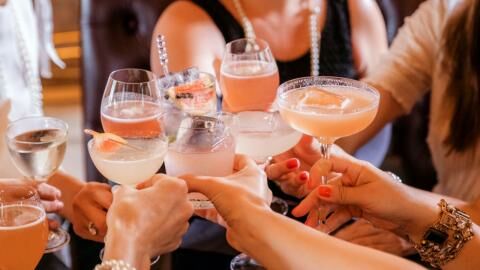'How about a beer?' How many times have you heard or uttered this phrase? Probably more than you can admit. This ritual of 'the drink' is part of our society's codes. But often, a drink means alcohol. But you don't have to go that way and if you want to have a bottle of beer without the intoxication, then, it's natural to choose non-alcoholic beer. But is alcohol-free beer really alcohol-free?
Discover our latest podcast
YES, there is alcohol in alcohol-free beer!
Yes, you feel cheated, but don't go away just yet, we are going to explain to you why alcohol-free beer can contain alcohol, and more importantly, it has the right to do so. To understand this, you have to realise the importance of alcohol-free beer inthe world today. It consists of a significant amount of beer sales today. It's not the majority, but it's far from insignificant.
How are alcohol-free beers produced? This graphic takes a look at the different methods used 🍺 pic.twitter.com/TGBEqROJmP
— Compound Interest (@compoundchem) August 24, 2022
How can a non-alcoholic beer sold on the market contain alcohol?
Well, for one the law says so. Specifically, Decree n° 92-307 of 31 March 1992 applies article L. 412-1 of the Consumer Code to beers. It stipulates that:
The designation 'alcohol-free beer' is reserved for beer which has an actual alcoholic strength of less than or equal to 1.2% by volume, following dealcoholisation or the start of fermentation
Basically, non-alcoholic beer is a beer with a minimum alcohol content, in this case, 1.2° maximum.
How is non-alcoholic beer made?
Beer is made up of four main ingredients: water, malt, hops and yeast. The alcohol is added to the beer during the fermentation process. This is when the sugar is transformed into alcohol by the yeast. And to avoid alcohol in your beer, you have two solutions. Either you remove the alcohol, or you prevent it from coming in.
To prevent the alcohol from coming in, you can either do a bottom fermentation, which means that you use light yeasts so that the sugar is transformed into alcohol as little as possible.
Or we do a rapid fermentation, which means that we stop the process very quickly. So short fermentation means little alcohol, but also little 'bubbles'.
So the other solution is to 'remove' the alcohol from the beer. And that's a technicality. You can evaporate the alcohol by heating the beer to over 80°. But again, this alters the taste of the beer, which is not the best.
How do you remove the alcohol from alcohol-free beer?
The most efficient way today is micro-screening, which means filtering the alcohol molecules. This is what works best, and it's what gets you closest to a zero alcohol level. But it is very expensive and only the big, well-known brewers can afford it. So, as you can see, drinking a non-alcoholic beer is not easy, but it can be a perfect ally in the evening. Social pressure sometimes pushes us to drink more than we should.
And a 0.5% non-alcoholic beer is 12 times less alcoholic than a nice 6% pint. It's not me who says it, it's the maths. Otherwise, you have another, even simpler solution. Not to drink beer, as alcohol is dangerous for your health and should be consumed in moderation.
This article was translated from Gentside FR.
Sources used:















